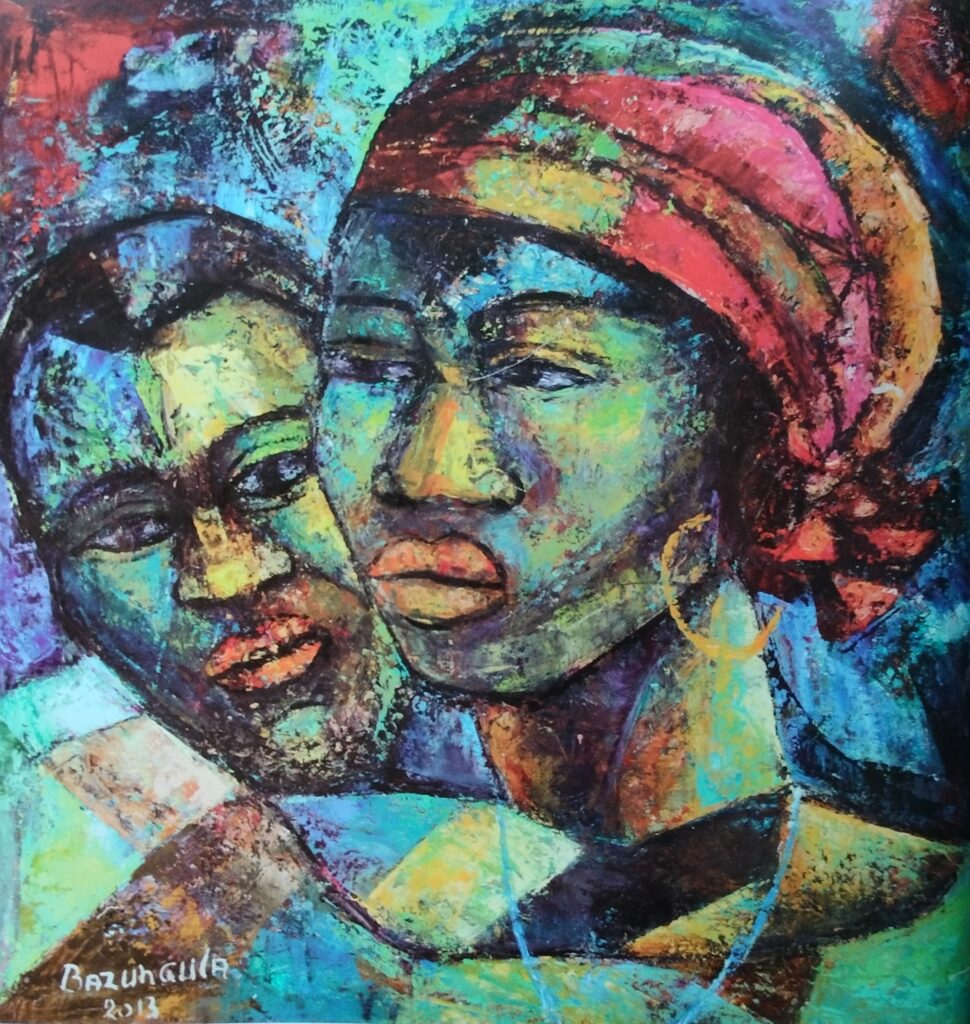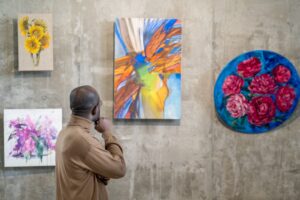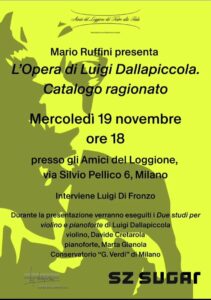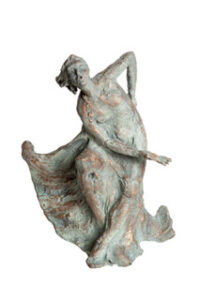
Maurice Bazungula was born in 1943 in Mpasa, in today’s Democratic Republic of Congo. In his works, we encounter the artistic traditions of his people, the Bakongo, and the vibrant colors of the African jungle, the paroxysmal rhythms of the composition project us into a ritual dance consisting of energy and colors, the strength and solidity of the human figures lead us back to within a universal humanism, a religion of love for man.
Bazungula considers himself a self-taught artist. He begins his creative research independently, observing and experimenting with the materials he finds at his disposal, so much so that at the beginning he uses flour sacks and masonite boards as canvases. He arrived in Kinshasa, the capital, in 1965 and it was here that he became assistant to the landscape painter Bala Jean, who encouraged him to continue in the profession. In the following years, he opened his studio and collaborated with other artists in the capital. In 1967 he took part in a significant exhibition promoted by the country’s Ministry of Tourism and Culture and won first prize, becoming one of the protagonists of Congolese art. In 1969 his first solo exhibition
The meeting with the philanthropist Maurice Alhadeff who invited him to be part of his art school, the “Alhadeff School”, was crucial. In this “search for the treasures of art”, as Bazungula defines his artistic practice, the painter’s work has a profound human value, it is testimony to the spirit of an entire community, of a people who have experienced terrible atrocities, but have not lost their character, their strength, their humanity.
Bazungula’s works sink into a profoundly human universe, alive and pulsating, they are a manifestation of human tensions and drives, yet the vibrant energy of the bright colors transports the spectator into a universe outside of his coordinates of reality (so much so that Bazungula dedicates himself even to abstract art sometimes), in a mystical space, pervaded with spiritual energy, in a vision of the divine evoked with a magical religious ritual. It is no coincidence, in fact, that in his art Bazungula also addresses religious themes and that in 1994 the Vatican commissioned him to create an important series of works for the African Christian art exhibition as part of the Second African Synod.



